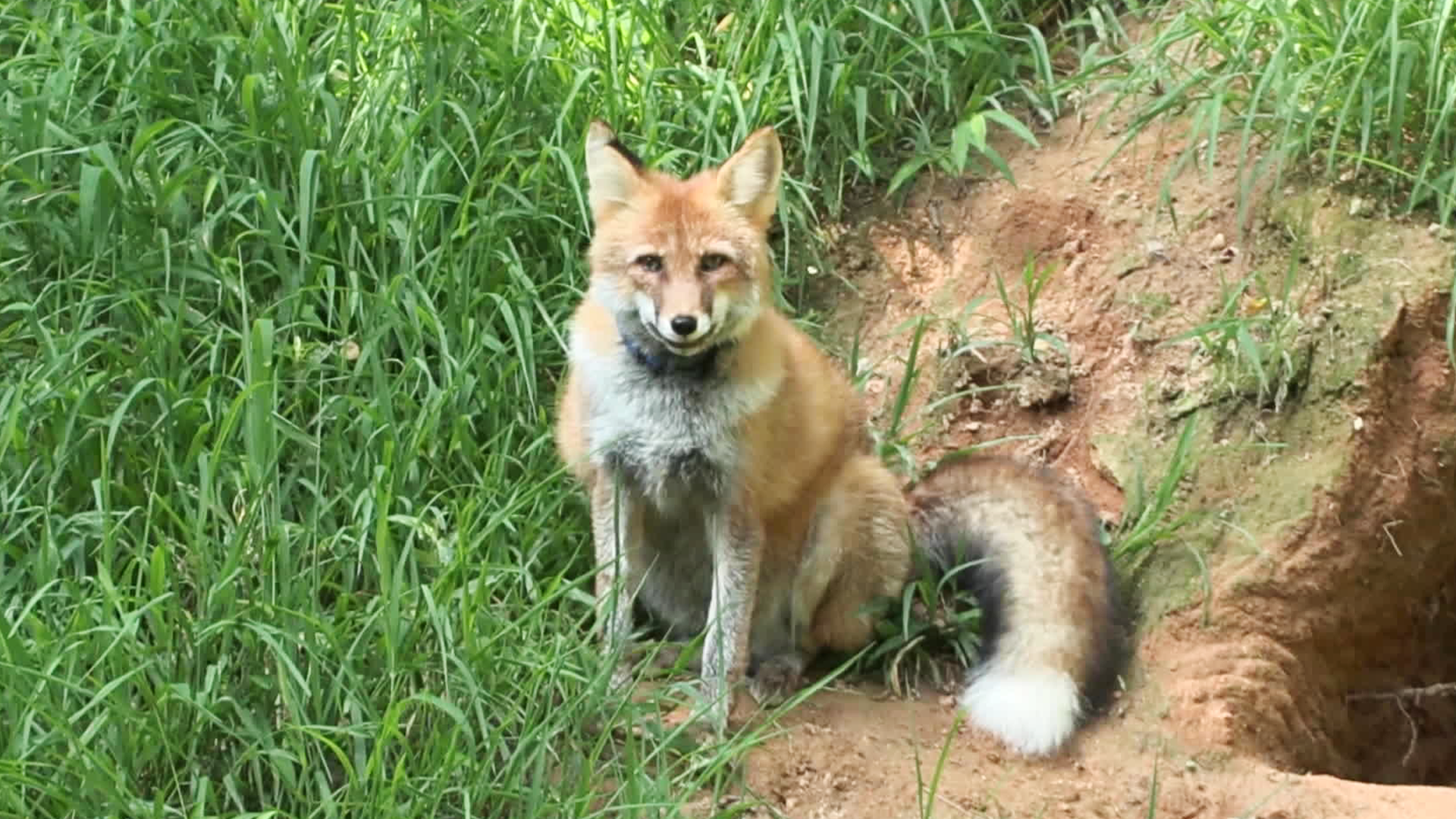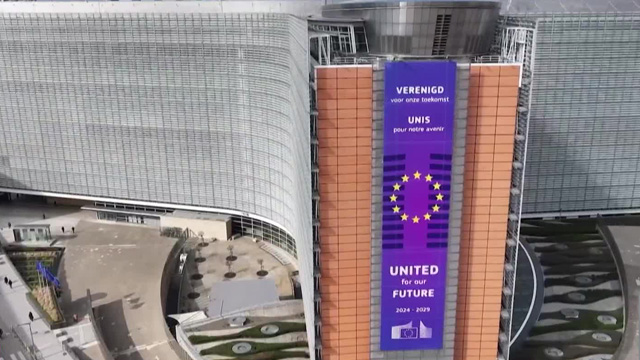Endangered red foxes released to wild
입력 2025.08.11 (04:15)
읽어주기 기능은 크롬기반의
브라우저에서만 사용하실 수 있습니다.
[Anchor]
Do you remember the 'rat-catching campaign' from the 1970s?
It wasn't just the rats that decreased in numbers.
The population of the red fox, which preys on rats, also declined, leading it to become an endangered species.
We have some good news.
After a challenging restoration project, thirty cubs have been returned to the wild.
Lee Se-heum reports.
[Report]
As the iron gate opens, the red foxes cautiously step out into the unfamiliar environment, looking around curiously.
Thirty native red foxes, classified as critically endangered wildlife, have been released in the Sobaeksan area.
The red fox was commonly seen throughout South Korea until the 1970s. They disappeared due to the 'rat-catching campaign' that reduced their main food source, the rats, as well as secondary poisoning from rat poison.
In response, the government has been promoting the restoration of red foxes since 2012.
Recently, with advancements in breeding technology, thirty-three cubs were born last year.
Most of the thirty foxes released this time are among these cubs.
The Korea National Park Service expects that the release of the foxes will contribute to balancing the ecosystem.
[Bae Seong-geun/Director of the Central Conservation Center, Wildlife Conservation Institute: "Foxes are important intermediate predators in our ecosystem, contributing to the population control of animals like deer and wild boars. They are beneficial animals that do not harm humans."]
However, the survival rate of the released foxes is estimated to be less than 50%.
This is largely due to natural deaths, as well as risks from roadkill, pesticides, and illegally set traps.
The service plans to monitor the foxes' adaptation to the wild by attaching GPS devices that can track their location for up to three years and observing them with unmanned cameras.
This is Lee Se-heum from KBS News.
Do you remember the 'rat-catching campaign' from the 1970s?
It wasn't just the rats that decreased in numbers.
The population of the red fox, which preys on rats, also declined, leading it to become an endangered species.
We have some good news.
After a challenging restoration project, thirty cubs have been returned to the wild.
Lee Se-heum reports.
[Report]
As the iron gate opens, the red foxes cautiously step out into the unfamiliar environment, looking around curiously.
Thirty native red foxes, classified as critically endangered wildlife, have been released in the Sobaeksan area.
The red fox was commonly seen throughout South Korea until the 1970s. They disappeared due to the 'rat-catching campaign' that reduced their main food source, the rats, as well as secondary poisoning from rat poison.
In response, the government has been promoting the restoration of red foxes since 2012.
Recently, with advancements in breeding technology, thirty-three cubs were born last year.
Most of the thirty foxes released this time are among these cubs.
The Korea National Park Service expects that the release of the foxes will contribute to balancing the ecosystem.
[Bae Seong-geun/Director of the Central Conservation Center, Wildlife Conservation Institute: "Foxes are important intermediate predators in our ecosystem, contributing to the population control of animals like deer and wild boars. They are beneficial animals that do not harm humans."]
However, the survival rate of the released foxes is estimated to be less than 50%.
This is largely due to natural deaths, as well as risks from roadkill, pesticides, and illegally set traps.
The service plans to monitor the foxes' adaptation to the wild by attaching GPS devices that can track their location for up to three years and observing them with unmanned cameras.
This is Lee Se-heum from KBS News.
■ 제보하기
▷ 카카오톡 : 'KBS제보' 검색, 채널 추가
▷ 전화 : 02-781-1234, 4444
▷ 이메일 : kbs1234@kbs.co.kr
▷ 유튜브, 네이버, 카카오에서도 KBS뉴스를 구독해주세요!
- Endangered red foxes released to wild
-
- 입력 2025-08-11 04:15:46

[Anchor]
Do you remember the 'rat-catching campaign' from the 1970s?
It wasn't just the rats that decreased in numbers.
The population of the red fox, which preys on rats, also declined, leading it to become an endangered species.
We have some good news.
After a challenging restoration project, thirty cubs have been returned to the wild.
Lee Se-heum reports.
[Report]
As the iron gate opens, the red foxes cautiously step out into the unfamiliar environment, looking around curiously.
Thirty native red foxes, classified as critically endangered wildlife, have been released in the Sobaeksan area.
The red fox was commonly seen throughout South Korea until the 1970s. They disappeared due to the 'rat-catching campaign' that reduced their main food source, the rats, as well as secondary poisoning from rat poison.
In response, the government has been promoting the restoration of red foxes since 2012.
Recently, with advancements in breeding technology, thirty-three cubs were born last year.
Most of the thirty foxes released this time are among these cubs.
The Korea National Park Service expects that the release of the foxes will contribute to balancing the ecosystem.
[Bae Seong-geun/Director of the Central Conservation Center, Wildlife Conservation Institute: "Foxes are important intermediate predators in our ecosystem, contributing to the population control of animals like deer and wild boars. They are beneficial animals that do not harm humans."]
However, the survival rate of the released foxes is estimated to be less than 50%.
This is largely due to natural deaths, as well as risks from roadkill, pesticides, and illegally set traps.
The service plans to monitor the foxes' adaptation to the wild by attaching GPS devices that can track their location for up to three years and observing them with unmanned cameras.
This is Lee Se-heum from KBS News.
Do you remember the 'rat-catching campaign' from the 1970s?
It wasn't just the rats that decreased in numbers.
The population of the red fox, which preys on rats, also declined, leading it to become an endangered species.
We have some good news.
After a challenging restoration project, thirty cubs have been returned to the wild.
Lee Se-heum reports.
[Report]
As the iron gate opens, the red foxes cautiously step out into the unfamiliar environment, looking around curiously.
Thirty native red foxes, classified as critically endangered wildlife, have been released in the Sobaeksan area.
The red fox was commonly seen throughout South Korea until the 1970s. They disappeared due to the 'rat-catching campaign' that reduced their main food source, the rats, as well as secondary poisoning from rat poison.
In response, the government has been promoting the restoration of red foxes since 2012.
Recently, with advancements in breeding technology, thirty-three cubs were born last year.
Most of the thirty foxes released this time are among these cubs.
The Korea National Park Service expects that the release of the foxes will contribute to balancing the ecosystem.
[Bae Seong-geun/Director of the Central Conservation Center, Wildlife Conservation Institute: "Foxes are important intermediate predators in our ecosystem, contributing to the population control of animals like deer and wild boars. They are beneficial animals that do not harm humans."]
However, the survival rate of the released foxes is estimated to be less than 50%.
This is largely due to natural deaths, as well as risks from roadkill, pesticides, and illegally set traps.
The service plans to monitor the foxes' adaptation to the wild by attaching GPS devices that can track their location for up to three years and observing them with unmanned cameras.
This is Lee Se-heum from KBS News.
-
-

이세흠 기자 hmm@kbs.co.kr
이세흠 기자의 기사 모음
-
이 기사가 좋으셨다면
-
좋아요
0
-
응원해요
0
-
후속 원해요
0










![[단독] 특검, ‘김건희 목걸이’ 관련 서희건설 압수수색](/data/layer/904/2025/08/20250811_6B3H9c.jpg)




이 기사에 대한 의견을 남겨주세요.